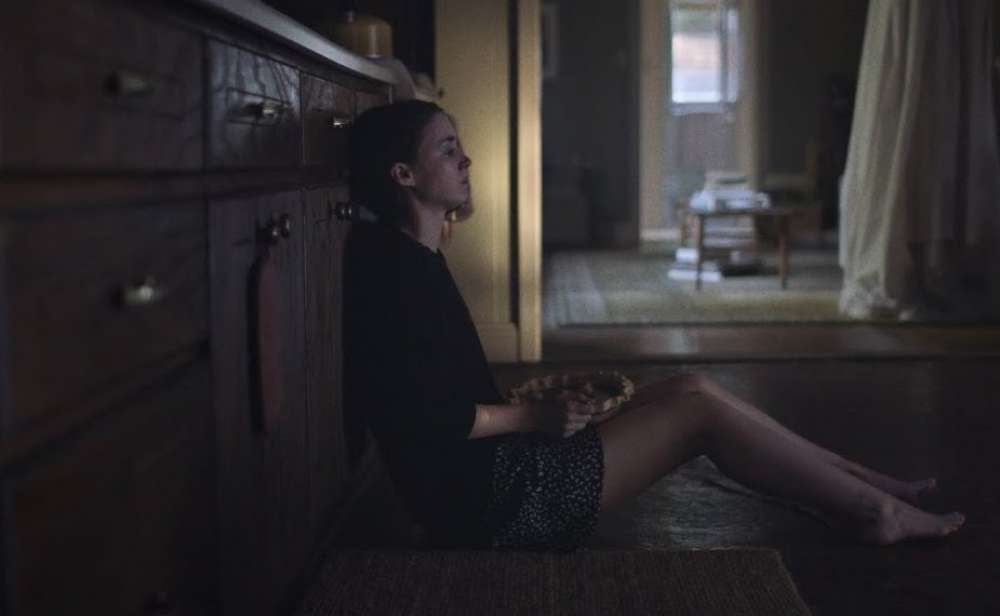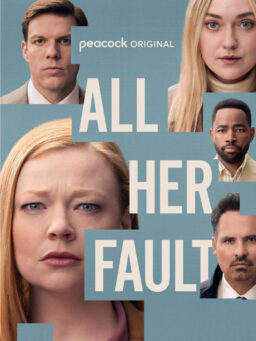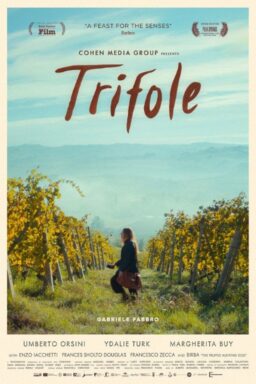We are pleased to offer an excerpt from the latest edition of the online magazine, Bright Wall/Dark Room. Their theme this month is “Food.” In addition to Marissa Higgins’ piece below on “A Ghost Story” and “Certain Women,” the new issue also features essays on “A Christmas Story,” “Howl's Moving Castle,” “Eat Drink Man Woman,” “Obvious Child,” “Landline,” “The Neon Demon,” “Bring Me the Head of Alfredo Garcia,” “Allegro Non Troppo,” “Bread” (1918) and “My Best Friend's Wedding.” They are also offering discounted holiday gift subscriptions for just $15/year ($10 off the regular annual price) through December 24.
You can read our previous excerpts from the magazine by clicking here. To subscribe to Bright Wall/Dark Room, or look at their most recent essays, click here
In the months after the woman I loved, C., died, I ate meat when drunk, sober, alone, and among strangers. Until then I had been a vegetarian. I would return to the dining hall to devour a double cheeseburger, sans friends, when I’d been there just an hour before, picking at a salad. I ate the burger in two, three bites. Past midnight, I crept to the vending machines, tucked into the basement near the laundry room, and bought multiple packages of Pop-Tarts, Cheetos, and Diet Coke. I drank cheap beer in my dorm room before class in the morning, hungry but avoiding the dining hall, full of friends and their questions.
Alone, I finally had the space to open and honor my grief. What I really wanted, and what I did not want to admit to anyone, not even to myself, was that I wanted my grief to be seen. My grief and my love.
This is something that David Lowery’s A Ghost Story does well. To watch the film, you have to watch grief. Messy, aching, uncomfortable grief. Rooney Mara, playing M, grieves the unexpected death of her partner, C, played by Casey Affleck, who dies in a car accident early in the film. She mourns him, and visible only to viewers and other ghosts, he returns as a simple white sheet, moving through time to watch not only M, but what came before the both of them. A Ghost Story is many strange and beautiful things; a temporal mediation on life; a question of how we haunt others, and ourselves; a statement on what endures, and how we manifest memory. Grief aches throughout.
But for me, A Ghost Story is Rooney Mara eating a pie until she pukes.
M, sitting on the kitchen floor eating pie is an expression of grief that comforts me. Nothing distracts from her ache; Lowery gives audiences no relief. There is no music, so we hear her chew, hear the fork scrape the bottom of the dish. We hear cars pass, a reminder that life goes on around us while we cry into our grief pies. Music would offer a distraction, a place for our brains to go and forge other connections. In loss, grief does not allow such escape.
The camera doesn’t move. M’s face, wet with tears, stays wet with tears. When she slows her chewing to breathe, to wonder if her body is going to reject this much food this fast, we can feel her stomach distend, adjust. When she springs to the bathroom to vomit, the camera brings us no closer. Neither does it turn away.
Reviewers, from film critics to YouTube commenters, struggle with the scene. The general sentiment is: We get it. Why does it have to be so long? That is to say, people understand that eating in grief is painful, mourning is difficult, she eats too much, too quickly, and immediately vomits. What they are saying is: We understand what grief looks like. Why must we sit through it?
*
Women’s trauma surrounds us. Women grieve our losses day in, day out. Not just literal deaths. We grieve the lives we had before sexual assault, domestic abuse, abductions, eating disorders. In movies, women’s trauma is represented as caricature: an anorexic withers away, unable to take even a bite of food during dinner with her family; a wife covers bruises from her husband, terrified to leave an otherwise comfortable life; a woman is brutally raped, reminding us that women’s bodies and pain are collateral damage to further along a plot.
But so rarely do we see women’s grief, uncomfortable and unapologetic. Often when we see a woman’s grief—her pain for any kind of loss—it’s a mere hint. A chip in the glass, a rupture in an otherwise strong facade. We wonder at the depth of her pain, are guided to think: it is beyond imagination. In A Ghost Story, it isn’t beyond imagination. It’s right there: The onus is on you, the viewer, not to look away.
In A Ghost Story, M’s grief takes up space. Grief is space. Grief is seen, if you only will yourself to look.
*
In the six months I spent with C. (yes, that little), I knew. I accompanied her to the hospital; curled beside her in a very narrow hospital bed; laid, alone, in her dorm room bed; beside her, again, in her childhood bed, at her family’s house, just after Christmas, as she healed from an emergency open-heart surgery. I knew that I _____ her. I knew I did not have ___ _____ to tell her.
I never said _ ____ ___. Then she died.
I could not make my grief neat. Friends, classmates, family, professors, a waitress, all asked: What were you two? Was she ___? Are you sure you ____ her? Did she know? I could not answer. I craved validation. Someone, anyone, to put into words what I could not. What we were was obvious, wasn’t it? Not to them, not to me.
What they said instead was: We know grief. Please, do not make us sit through it with you. Please, they said, make your grief small enough to understand.
Corresponding initials aside, my relationship with C. hadn’t been as clear-cut as the M and C of the film. In A Ghost Story, we watch a heterosexual couple kiss, cuddle, bicker about living in the city or the country. With my C., I didn’t know what we were then, and I don’t know what we were now.
I am nearing a decade since her death and the questions have not changed. I am asked: Well did you ever ____ ___ with C.? Did you ever talk about ____? Did you feel____? Did you say _ ____ ___?
These questions haunt me, as does knowing I can never answer them. Words were not, are not, enough. Perhaps all I can do is look at my own grief, will myself not to cut away.
*

Food pulled me to C. before her death, too. In Certain Women, Beth (Kristen Stewart) and Jamie (Lily Gladstone), meet at a local diner for several late, late night orders of burgers and soups. Beth eats, Jamie watches. Beth, exhausted from her job as a lawyer, teaches a community class on education law that Jamie, a rancher, takes for seemingly no reason. Jamie drives her car into the parking lot, following other cars, and settles into class.
The first night C. invited me to her room for whiskey and pizza, I had walked around my campus, aimless. Why am I outside? I’d wondered. Why is my body taking me in circles? The cars could have led Jamie anywhere. My feet could have taken me to my bed. Chance changes so much.
Of course, the reason Jamie stays in the class is evident; she is attracted to Beth. Their relationship remains entirely ambiguous, but viewers—and the characters themselves—feel the tension.
At the diner, Beth eats a few spoonfuls of the soup, slices a burger in half and bites into it. She is messy, quick, slouched. The camera doesn’t shy away from a woman eating. She talks with her mouth full, wipes her mouth on a napkin still wrapped around silverware. You can practically feel the grease on her fingers, the skin around her mouth. There are no delicate salads, no denials of hunger, of need.
Each time, she orders too much food. I can understand that when one desire feels forbidden, you indulge in another.
Beth pushes her plates, still full of fries and meat, toward Jamie. Jamie refuses each time, the grilled cheese, the soup, the ice cream. How difficult it is to accept love when we do not know it is being offered. When we do not yet realize it is limited.
“Are you gonna come back?” Beth asks Jamie as she chews. The law class, Jamie admits, is one she hadn’t even signed up for. But it doesn’t matter; she’ll return every Tuesday and Thursday, if not for a passion for law, to see Beth. With hope, of course, of taking her to the cattle ranch where she lives and works. With hope, of course, for more.
After three classes, Beth quits. Not just the diner dinners, but the class, the town, the hope. The drive is too long—four hours each way—and she is exhausted. Jamie doesn’t know this until she makes the drive herself and sleeps in her car, parked by Beth’s law office, hoping to see her again. Beth explains, and it is all reasonable; the drive, her fatigue, the roaming cows on country roads at 2 a.m. on a Tuesday night.
What they do not explain, what they do not ask of one another is: Are you ___? Do you ____ me? What are we? Where could this go?
Jamie starts the long drive home to her ranch. Those diner nights are sometimes all you get.
*
Food as desire is nothing new, but trepidation around food, and by extension, trepidation around desire, feels intrinsically queer. C. was always trying to get me to eat. In the dining hall, at restaurants, at divey diners. She kept snacks in her dorm room, but sustenance, too. Endless cans of soup. I was 19, then, and felt like we were middle aged, choosing canned soup and watching movies in bed. We didn’t clamor for fake IDs, happy, instead, to drink rum and Cokes in her room.
I shook with joy.
Before the nausea of grief, it was the nausea of excitement. Proximity to C. shut down my insides. At 1 a.m., she’d drive us to a local diner, order pancakes, eggs, and bacon. Eat, she’d prompt, eat. How could I chew, taste, swallow when she sat across from me?
Months later, when she was dead, food became background. Chew, swallow, chew, swallow. I did not taste, did not count calories, did not pace myself.
C. said Eat, I said yes. C. said Get in my car, we’re going to the diner, I said yes. C. said I am awake, come to the hospital, I said yes. C. said Take the long train to my parent’s house, and stay, and I said yes. Yes, yes, yes. Then C. died and what could I say yes to?
*
Grief is not neat. You think you have more time. The half-eaten burgers, the dropped glances, the surgeries that keep a heart together. These moments, you believe, are the start. These moments promise. In grief, you remember—because you have always known, as I knew—that these moments were both the beginning and the end. Long drives at night, a grilled cheese at the diner, mostly uneaten. Watching her sleep, inches apart, afraid touch would dissolve me. These moments, all of them, make up a life.
Grief, too, is living.
This year, on what would have been her 29th birthday, I sit on my kitchen floor and eat an apple pie. Days before, I had poured sliced apples into a crust that came from a box from the local supermarket. To the apples, I add cinnamon, lemon juice, brown sugar, chunks of butter. I bake it, I let it cool. The pie is hideous, but I eat it anyway.
No one else eats the pie. I take a fork to it, make it last a few days. At first, I eat it standing, looking out my kitchen window. In the years since C.’s death, I have wanted my grief to be seen. I craved validation; not spotlight, not centering, but nods of understanding. The depth of my grief did not feel seen, the validation of my queerness, of my love, of my queer love, did not appear in ways I could understand it. People, I felt, were always turning up the music, cutting short a scene, wanting to fast forward the aches.
On her birthday, I sit on my kitchen floor, eat my pie, watch myself in my oven’s glass door. People have slowed in their questions, now, eight years later. It is my turn to ask them to myself. I put forkful after forkful of pie into my mouth. Watch myself chew. Now, it is my turn to look at my grief. To ask and answer the questions that haunt me. Now, it is on me not to turn away.











